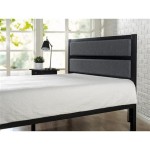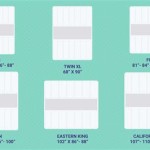How To Make A Bed Against The Wall
Positioning a bed against a wall is a common practice, particularly in smaller rooms where optimizing space is crucial. However, making a bed snug against a wall presents unique challenges compared to a bed with access from both sides. This article outlines effective strategies for making a bed positioned against a wall, ensuring both a comfortable sleeping experience and an aesthetically pleasing bedroom.
Essential Steps for Making a Bed Against a Wall
Making a bed against a wall requires a slightly modified approach. The following steps offer a comprehensive guide:
- Clear the Area: Remove any obstacles, such as nightstands, lamps, or chairs, that hinder access to the bed.
- Fitted Sheet: Start by fitting the fitted sheet securely over the mattress, ensuring a snug fit on all corners and sides, paying particular attention to the corners against the wall.
- Flat Sheet: Place the flat sheet over the fitted sheet, aligning the top edge with the head of the mattress. Smooth out any wrinkles, focusing on achieving a taut surface. Tuck the bottom edge of the flat sheet securely between the mattress and the box spring, working along the accessible sides and foot of the bed.
- Hospital Corners (Optional): This technique creates crisp, folded corners. While slightly more challenging with wall access limited, it enhances the overall appearance. Lift the bottom corner of the flat sheet, forming a 45-degree angle. Tuck the hanging portion under the mattress along the side. Then, fold the angled portion down over the mattress and tuck it in securely. Repeat on the other accessible bottom corner.
- Blankets and Comforter: Spread blankets or a comforter evenly over the flat sheet, aligning the top edge with the head of the mattress. Smooth out any wrinkles, ensuring even distribution.
- Tucking: Tuck the blankets and comforter between the mattress and box spring along the accessible sides and foot of the bed, maintaining a smooth and even appearance. Consider using a "top sheet blanket tuck" method to secure the top sheet, blanket, and comforter together for a neater look and to prevent the top layers from shifting.
- Pillows: Position pillows against the wall or headboard for back support and visual appeal.
Techniques for a Smooth and Tidy Finish
Several techniques can help achieve a professionally made bed against a wall:
- Pre-Planning: Strategically position the bed during initial room setup to maximize access during bed-making. Even a few extra inches can significantly simplify the process.
- “Shake and Smooth” Method: After placing each layer (fitted sheet, flat sheet, blankets, comforter), vigorously shake the layer to evenly distribute it and minimize wrinkles before tucking.
- Specialized Tools: Consider tools like a bed maker tool, which offers a thin, flat surface for assisting with tucking sheets and blankets deeply under the mattress, particularly helpful against a wall.
Addressing Common Challenges
Making a bed against a wall often presents specific difficulties:
- Limited Access: The wall restricts movement and makes tucking sheets challenging. Employing the "shake and smooth" method and potentially using specialized tools can alleviate this issue.
- Wrinkle Formation: The restricted access can lead to wrinkles, especially near the wall. Meticulous smoothing and tucking, as well as the use of a bed maker tool, can help prevent wrinkles.
- Uneven Tucking: Maintaining a consistent tuck around the entire bed can be difficult. Begin tucking from the foot of the bed and work systematically along the accessible sides to ensure a balanced and uniform appearance.
Choosing Appropriate Bedding
Bedding selection plays a crucial role in both the ease of bed-making and the overall aesthetic:
- Fitted Sheet Size: Ensure the fitted sheet is the correct size for the mattress to avoid ill-fitting corners and bunching against the wall.
- Flat Sheet Dimensions: Opt for a flat sheet with generous dimensions to allow for ample tucking on the accessible sides and foot of the bed.
- Material Considerations: Choose materials that are easy to manipulate and drape well, facilitating a smooth and wrinkle-free appearance.
Maintaining a Made Bed Against the Wall
Keeping a bed made against a wall looking tidy requires consistent effort:
- Daily Smoothing: Regularly smooth out wrinkles and re-tuck loose areas, especially near the wall, to maintain a polished look.
- Periodic Re-Making: Completely re-make the bed regularly to ensure all layers are properly aligned and tucked, addressing any accumulated wrinkles or shifting.
- Protective Measures: A thin, decorative throw blanket draped over the foot of the bed can help protect the bedding from daily wear and tear and maintain a tidy appearance.
Maximizing Space and Aesthetics
Placing a bed against a wall often aims to maximize space. Consider these additional factors:
- Headboard Selection: A headboard can improve both comfort and aesthetics. Choose a headboard that complements the room's style and doesn't overwhelm the space.
- Wall Decor: Utilize wall space above the bed for artwork or decorative elements to create a focal point and enhance visual interest.
- Minimalist Approach: Embrace a minimalist aesthetic to avoid cluttering the limited space around the bed. Keep accessories and decorations to a minimum for a clean and organized look.

30 Ways To Position A Bed Against Wall Create Space

Space Saver Rotate The Bed
.jpg?strip=all)
How To Make A Linen Bed Frame Orc Week 4

These 38 Small Bedroom Ideas Pack Style And Storage In The Teensiest Spaces Bed Corner Against Wall Guest Room Office

Creative With Corner Beds How To Make The Most Of Your Floor Space

Inside A Mother Of Four S Glamorous Getaway Apartment Corner Bed Ideas Frame Against Wall

Creative With Corner Beds How To Make The Most Of Your Floor Space

This Is The Right Place To Put Your Bed In Bedroom
.jpg?strip=all)
Diy Wood Dowel Headboard Learn How To Make A Simple

Where To Put A Rug When The Bed Is Against Wall Wild Creative Project
Related Posts







